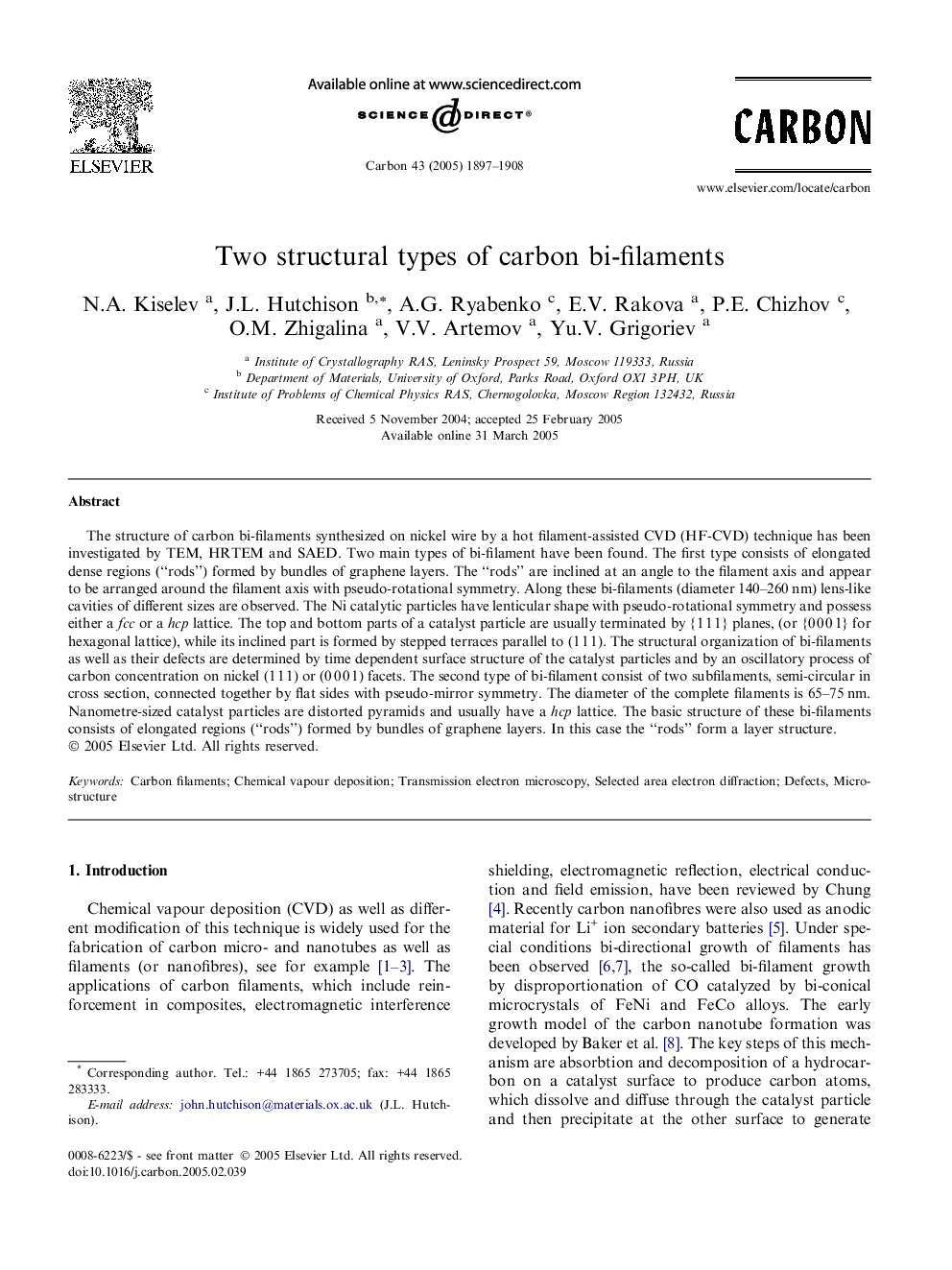| Article ID | Journal | Published Year | Pages | File Type |
|---|---|---|---|---|
| 1420137 | Carbon | 2005 | 12 Pages |
Abstract
The structure of carbon bi-filaments synthesized on nickel wire by a hot filament-assisted CVD (HF-CVD) technique has been investigated by TEM, HRTEM and SAED. Two main types of bi-filament have been found. The first type consists of elongated dense regions (“rods”) formed by bundles of graphene layers. The “rods” are inclined at an angle to the filament axis and appear to be arranged around the filament axis with pseudo-rotational symmetry. Along these bi-filaments (diameter 140-260Â nm) lens-like cavities of different sizes are observed. The Ni catalytic particles have lenticular shape with pseudo-rotational symmetry and possess either a fcc or a hcp lattice. The top and bottom parts of a catalyst particle are usually terminated by {1Â 1Â 1} planes, (or {0Â 0Â 0Â 1} for hexagonal lattice), while its inclined part is formed by stepped terraces parallel to (1Â 1Â 1). The structural organization of bi-filaments as well as their defects are determined by time dependent surface structure of the catalyst particles and by an oscillatory process of carbon concentration on nickel (1Â 1Â 1) or (0Â 0Â 0Â 1) facets. The second type of bi-filament consist of two subfilaments, semi-circular in cross section, connected together by flat sides with pseudo-mirror symmetry. The diameter of the complete filaments is 65-75Â nm. Nanometre-sized catalyst particles are distorted pyramids and usually have a hcp lattice. The basic structure of these bi-filaments consists of elongated regions (“rods”) formed by bundles of graphene layers. In this case the “rods” form a layer structure.
Keywords
Related Topics
Physical Sciences and Engineering
Energy
Energy (General)
Authors
N.A. Kiselev, J.L. Hutchison, A.G. Ryabenko, E.V. Rakova, P.E. Chizhov, O.M. Zhigalina, V.V. Artemov, Yu.V. Grigoriev,
